
Humans may be the only predatory animals on the planet that don’t seem to care about losing their sense of hearing. At least, you might assume that given how often gun hunters use hearing protection in the field.
The consequence is that like an old wolf who’s gone deaf, hard-of-hearing hunters are less effective. They can’t hear the faraway bugle of an elk or the gobble of a turkey, and that whitetail buck is well within sniffing distance before they hear it crackling through the November leaves.
The good news is that unlike previous generations, we have access to a wide variety of electronic hearing protection that protects our eardrums while preserving our situational awareness. Here are some of the best options for the range and the field.
Jump to: Hearing Protection We Recommend
How to Pick a Hearing Protection Product
First, consider your intended application: do you want to use this hearing protection in the field, at the range, or both? There are all kinds of hearing protection categories, but “plugs” and “muffs” are the most common. Plugs are better in the field. They don’t interfere as much with clothing, hats, or rifle stocks, and they’re lighter and more packable. But they also tend to offer less hearing protection. That’s probably fine for a single rifle shot, but not ideal for continuous shooting.
Muffs usually offer better hearing protection, and it’s essential to own at least one pair for a long day at the range. Especially when practicing with high-powered hunting calibers, you’ll want a good set of muffs to offset those muzzle blasts. But muffs are also bulky, and probably not what you want to be toting along in a backpack up a mountain.
All hearing protection comes with a “noise reduction rating” (NRR). In layman’s terms, the NRR indicates how many decibels a hearing protection device will reduce sound. Most hearing protection designed for shooting is listed with an NRR between 22 and 30. When shooting small caliber rifles and handguns, you can probably get away with 22 or 23. For larger calibers and shotguns, it’s best to find something 26 or above.
That doesn’t mean a set of plugs with an NRR of 22 will cause hearing loss if you fire a rifle once in the field. Like most other types of physical damage, hearing damage gets worse the more often you expose yourself to it. In other words, a full day in a duck blind will require a greater NRR than that single shot on a whitetail.
NRR gets especially squirrely when you factor in fitment. NRRs are calculated based on a perfectly fit hearing protection device. But sometimes plugs aren’t the right size or your shooting glasses keep your muffs from sealing correctly. Whichever hearing protection you choose, make sure you follow all the instructions and get a proper seal.
Ultimately, try to use as much hearing protection as you can in any given situation. If you can get away with foam plugs plus quality ear muffs, do it. That’ll protect you from just about anything. If you can’t, select the device with the highest NRR rating that you can comfortably wear during your intended pursuit. And listen to your body: if your ears start to hurt or ring, or you get a headache, it’s time to up the ante.
Jump to: Product Notes
Hearing Protection We Recommend
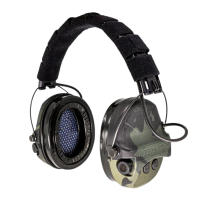 Safariland Liberator HP 2.0
Steve's Pick
|
 OtoPro Soundgear Phantom
Janis’s Pick
|
 Howard Leight Impact Pro
Tony’s Pick
|
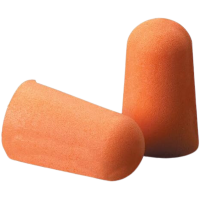 Throwaway Orange Plugs
Mark’s Pick
|
 Champion Vanquish Pro
Jordan’s Pick
|
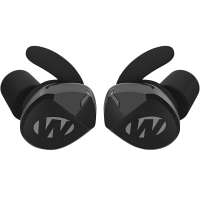 Walker’s Silencer BT 2.0
Honorable Mention
|
|
|---|---|---|---|---|---|---|
| NRR | 26 | 25 | 30 | 32 | 26 | 24 |
| Type | Muffs | Plugs | Muffs | Plugs | Muffs | Plugs |
| Can Hear Surroundings | Yes | Yes | Yes | No | Yes | Yes |
| Battery Type | AAA, CR123 | Rechargable | AAA | N/A | Rechargable | Rechargable |
| Battery Run Time | 160-300 hours | 23 hours | 350 hours | Infinite | 150 hours | 14 Hours |
| Price | $350-500 * | $800 single - $1,600.00 pair * | $85 * | $0.20 * | $120 * | $240 * |
| Field Notes | Field Notes | Field Notes | Field Notes | Field Notes | Field Notes |
Product Notes
Steve's Pick
If you’re looking for a set of high-quality muffs, it doesn’t get much better than the Safariland Liberator line of products. Steven Rinella likes the HP 2.0 model because he can comfortably wear them in a duck blind all day while still hearing his hunting partners and protecting his hearing.
"When it comes to hanging at a gun range or sitting with a few other guys in a busy duck blind, I’m still a big believer in getting the full hearing protection offered by conventional ear muffs," Steve said. "The Liberators from Safariland are comfortable but still ultra quiet. They have several modes that allow me to drown out all noise, hear voices only, or amplify sounds that aren’t gunfire."
Specifications
- NRR: 26
- Type: Muffs
- Can Hear Surroundings: Yes
- Battery Type: AAA, CR123
- Battery Run Time: 160-300 hours
- Price: $350-500
Janis's Pick
The best hearing protection is custom fit to each ear, and that’s exactly what you get with OtoPro. Janis Putelis likes the Soundgear Phantom model because it amplifies sound while protecting hearing, and it connects to his phone via Bluetooth.
"Custom fitted to my ears for the best protection, but the technology still allows me to hear my hunting partners clearly as they whisper-talk to me," Janis said. "I also use them while mowing the lawn and listening to the Wired to Hunt Podcast at the same time."
The Soundgear Phantom is by far the most expensive option on our list, but its solid NRR, robust suite of features, and low-profile plug design means it can be used in virtually every shooting or hunting application.
Specifications
- NRR: 25
- Type: Plugs
- Can Hear Surroundings: Yes
- Battery Type: Rechargable
- Battery Run Time: 23 hours
- Price: $800 single - $1,600.00 pair
Tony's Pick
Tony Peterson started his search for high quality ear protection after a buddy of his shot near his ear while they were hunting ruffed grouse. "My left ear hasn’t stopped ringing since," Tony said.
He tried custom-fitted, noise-canceling earphones, but "they drove me crazy because I couldn’t adjust the amplification levels." Then he found the Howard Leight Impact Pro muffs. They were exactly what the doctor ordered, and they allowed him to hear his dogs and the birds and to protect his hearing with every shot.
"Honestly, these things have been a hunt-saver for me, and they work really well on the range, too," he said.
These muffs come with many of the same features as more expensive options, but they can be found for less than $85 online. They might not be ideal for rifle shooting since they stick out farther than Steve’s Safariland Liberators. But for pistol shooting and bird hunting, their 30 NRR is more than enough to get the job done.
Specifications
- NRR: 30
- Type: Muffs
- Can Hear Surroundings: Yes
- Battery Type: AAA
- Battery Run Time: 350 hours
- Price: $85
Mark's Pick
You could purchase 8,000 pairs of disposable foam ear plugs for the cost of Janis’s OtoPro, and, incredibly, you’d get just as much hearing protection. You wouldn’t get active noise cancellation and Bluetooth connectivity, but you’d still save your hearing. That’s why Mark Kenyon and (probably) millions of other hunters opt for the cheap throwaway ear plugs you can find at every hardware and sporting goods store in the country.
"Expensive, custom-fit hearing protection has its place, but I find myself returning to these cheap-o foam earplugs," Mark said. "They offer more than enough protection for most hunts, and I don’t have to hide the purchase receipt from my wife."
These plugs will only protect your ears if you’re wearing them properly. Roll each plug in your fingers until the end is as pointy as you can make it, then stuff it down your ear as far as is comfortable. The plug will slowly expand and fill your ear canal, blocking out most noise.
And, if you want to get fancy, you can also purchase ear plugs on a cord you can hang around your neck. This keeps them handy during a hunt and saves you from fumbling in your pockets as the deer steps out from cover.
Specifications
- NRR: 32
- Type: Plugs
- Can Hear Surroundings: No
- Battery Type: N/A
- Battery Run Time: Infinite
- Price: $0.20
Jordan's Pick
I used cheap muffs for a long time, and while they blocked out the report of a rifle, I could never wear them for very long. That stiff rubber insulation hurt my big ears, and I’d waffle back and forth between muffs and plugs depending on the type of firearm I was shooting.
That changed when I switched to the Champion Vanquish Pro. These muffs come with all the bells and whistles (sound amplification, Bluetooth connectivity, rechargeable battery), but they also feature ultra-soft “acoustic foam” padding that keeps my ears happy all day. It gets a little hot during Texas summers, but I’ll take that over ear pain.
Battery life can be an issue. They’re rated for 150 hours, but I think that might be a bit of an overstatement. But even if they run out of battery during a trip to the range, I still have a pair of super-comfortable traditional muffs.
Specifications
- NRR: 26
- Type: Muffs
- Can Hear Surroundings: Yes
- Battery Type: Rechargable
- Battery Run Time: 150 hours
- Price: $120
Honorable Mention
If you’re wanting plugs at a price point between Janis’s and Mark’s, Walker’s line of ear pro is a good place to start. I used their Silencer BT 2.0 model for a long time, and they offer several advantages over the throwaway orange plugs.
They allow you to hear your surroundings, which makes them a great option for hunting. They’re also Bluetooth compatible, and they have active gunshot suppression and wind noise reduction. They recharge in a docking station like many common Bluetooth earbuds, and they offer a solid 14 hours of battery life when not in Bluetooth mode.
Durability can be an issue, especially if you (like me) use them frequently as earbuds for listening to music and podcasts. But they’re an overall solid product, and they can be extremely useful in the field.
Specifications
- NRR: 24
- Type: Plugs
- Can Hear Surroundings: Yes
- Battery Type: Rechargable
- Battery Run Time: 14 Hours
- Price: $240

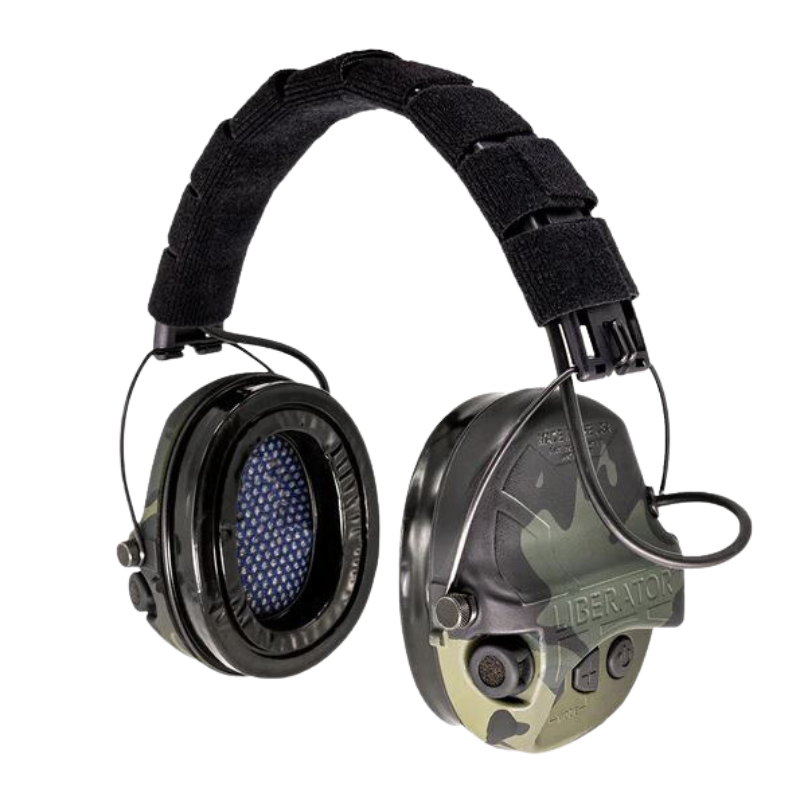


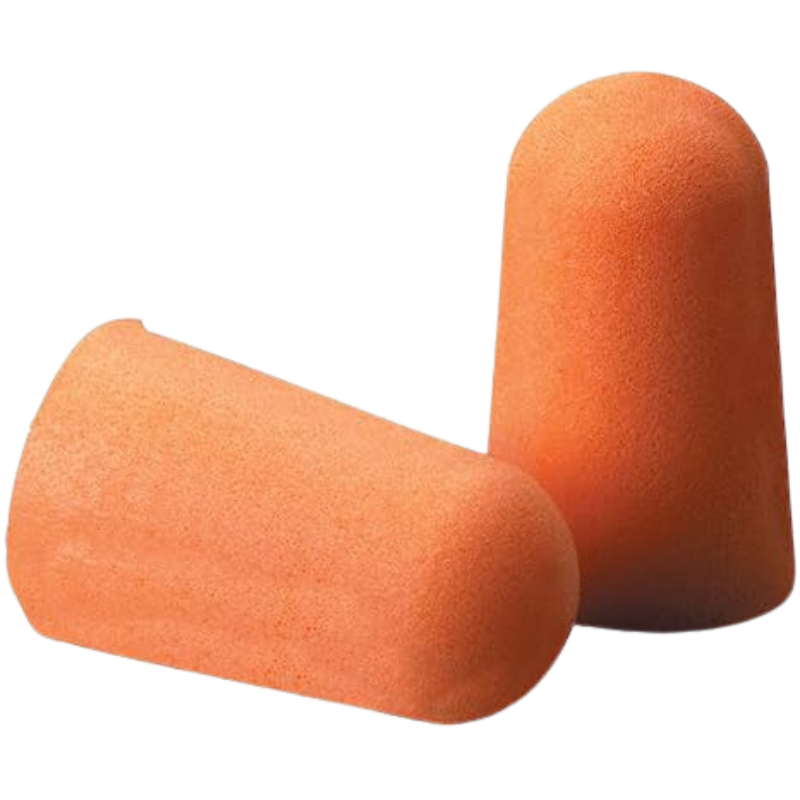

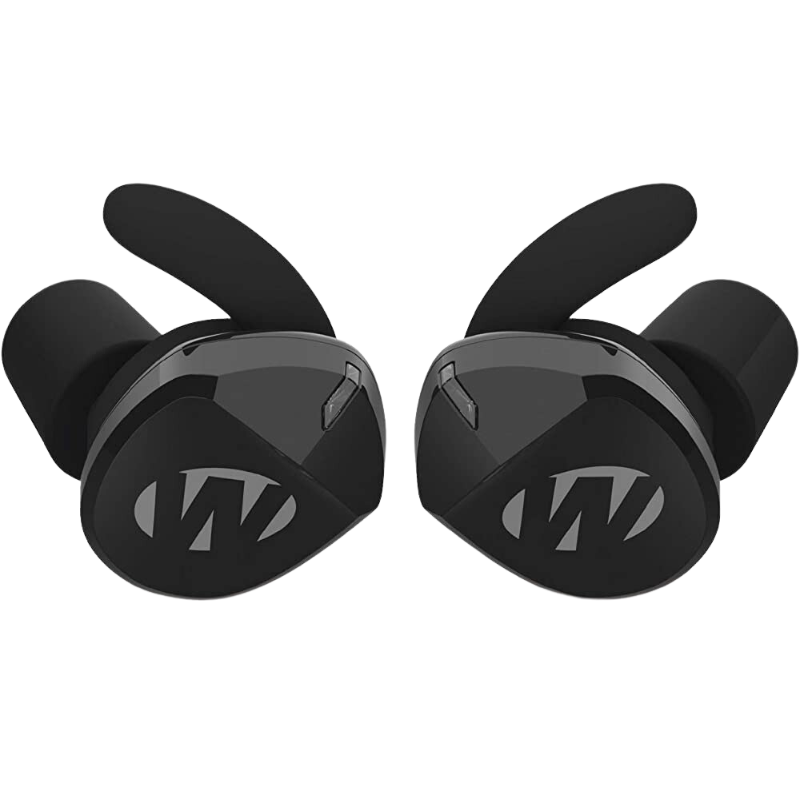










Conversation